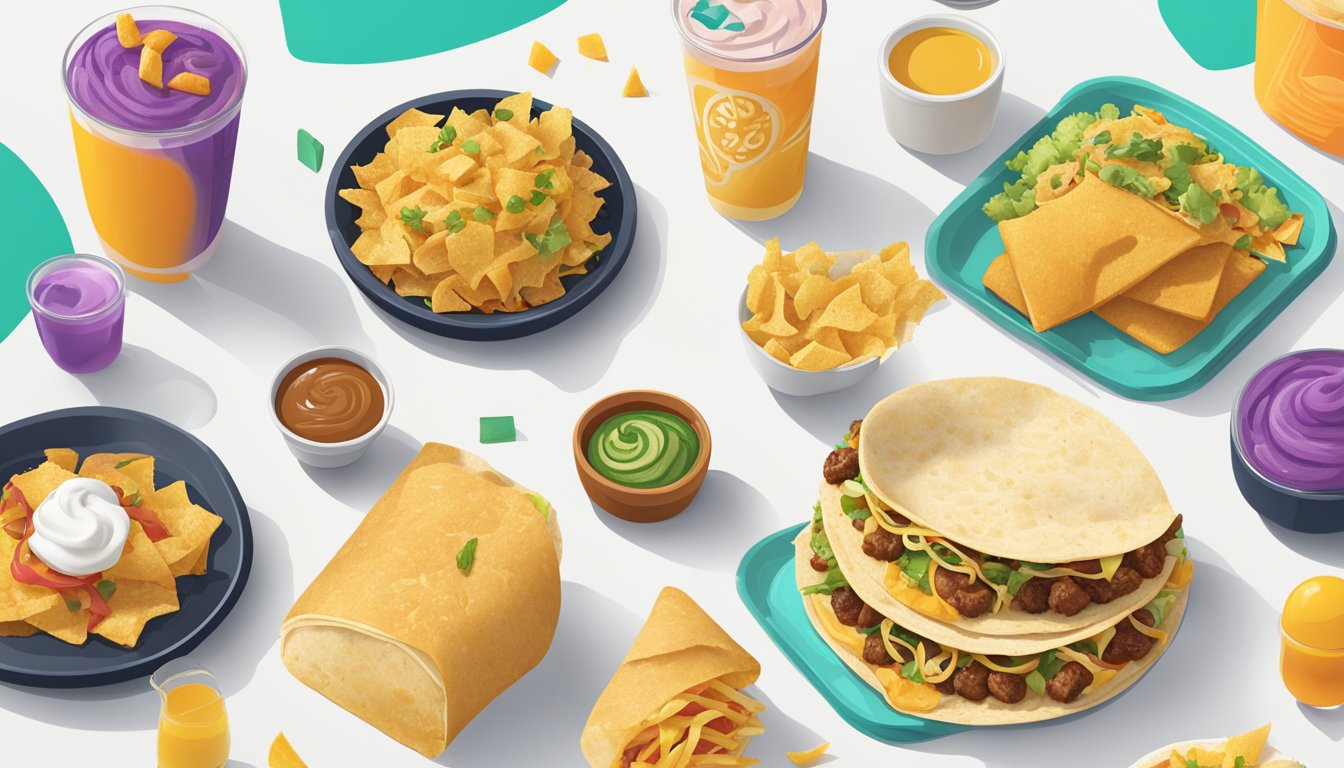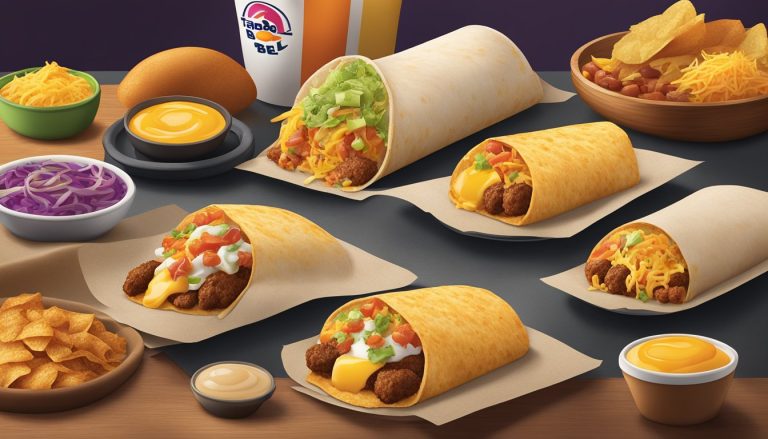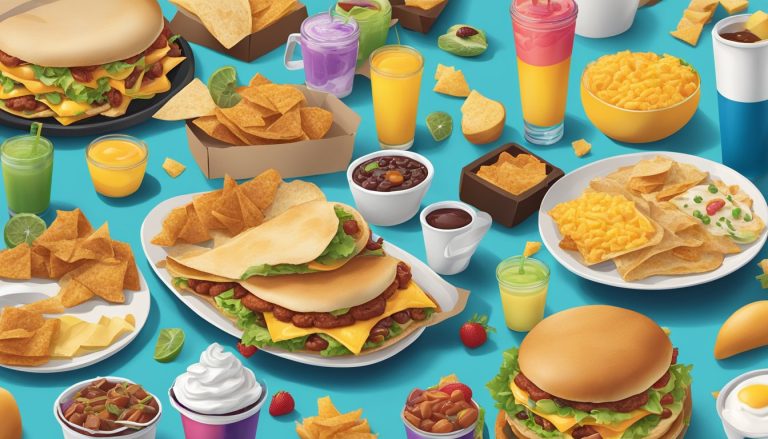Taco Bell, the popular fast-food chain, is embracing artificial intelligence to revolutionize its operations, including breakfast menu development. As part of Yum! Brands’ AI-first strategy, Taco Bell is leveraging advanced technologies to enhance customer experiences and streamline processes across its locations.
AI is playing a crucial role in Taco Bell’s menu innovation, particularly for breakfast offerings, by analyzing customer preferences, purchasing patterns, and emerging food trends. This data-driven approach allows the company to create more appealing and personalized breakfast options that cater to evolving consumer tastes.
The integration of AI extends beyond menu development to other aspects of Taco Bell’s operations. The company has implemented AI-powered labor scheduling in thousands of U.S. locations and is expanding voice AI technology in drive-thrus. These advancements aim to improve efficiency, reduce wait times, and provide a more seamless experience for breakfast patrons and beyond.
The Evolution of Taco Bell
Taco Bell’s journey from a single restaurant to a global fast-food powerhouse showcases its innovative spirit and adaptability. The brand’s growth and transformation have been marked by menu innovations, technological advancements, and strategic expansions.
From Humble Beginnings to Fast-Food Innovator
Taco Bell was founded in 1962 by Glen Bell in Downey, California. The first restaurant served tacos, burritos, fries, and chiliburgers. Bell’s vision was to bring Mexican-inspired cuisine to a wider American audience.
By 1970, Taco Bell had expanded to 100 restaurants. The 1980s and 1990s saw rapid growth and menu diversification. The introduction of the Crunchwrap Supreme in 2005 became a game-changer for the brand.
Taco Bell embraced digital innovation early on. In 2016, it launched mobile ordering and payment options. This set the stage for future technological advancements.
Yum! Brands and Global Expansion
In 1997, PepsiCo spun off its restaurant division, creating Tricon Global Restaurants, later renamed Yum! Brands. This move included Taco Bell, KFC, and Pizza Hut.
Under Yum! Brands, Taco Bell accelerated its international expansion. The chain entered new markets like Spain, China, and the UK. It adapted menus to local tastes while maintaining its core offerings.
Taco Bell’s growth strategy focused on both standalone restaurants and co-branded locations with KFC and Pizza Hut. This approach allowed for efficient resource utilization and broader market penetration.
Recent years have seen Taco Bell invest heavily in AI technology. The chain is implementing AI-powered drive-thrus and labor scheduling systems, aiming to enhance customer experience and operational efficiency.
Artificial Intelligence in the Fast-Food Industry

AI technology is rapidly transforming fast-food operations and customer experiences. Major chains are adopting AI solutions to streamline processes and enhance service delivery.
Current AI Utilization by Competitors
McDonald’s has integrated AI into its digital drive-thru menus, personalizing offerings based on factors like time of day and weather. The company acquired AI firm Dynamic Yield to power these smart menu boards.
Chipotle employs AI for more efficient task management. They introduced Chippy, an AI-powered robot that automates tortilla chip production.
KFC and Taco Bell are testing AI-enabled drive-thrus. These systems provide personalized recommendations to customers, improving order accuracy and speed.
Wendy’s has implemented AI-powered voice ordering technology at some locations. This allows for more natural interactions during the ordering process.
Potential of AI Technology in Fast-Food
AI presents numerous opportunities for further innovation in fast food. Predictive analytics could optimize inventory management and reduce food waste.
Machine learning algorithms may enhance recipe development, creating new menu items tailored to regional preferences.
AI-powered quality control systems could ensure consistent food preparation and presentation across locations.
Facial recognition technology might enable personalized greetings and order suggestions for repeat customers.
Automated kitchen equipment guided by AI could increase production speed and efficiency, particularly during peak hours.
Technological Innovations at Taco Bell
Taco Bell is embracing cutting-edge technologies to enhance customer experience and streamline operations. The fast-food chain is implementing AI-driven solutions in its drive-thrus and digital menu boards.
Drive-Thru Voice AI Implementation
Taco Bell is rolling out AI-powered drive-thrus across hundreds of its U.S. locations. This technological leap aims to improve efficiency and reduce wait times. The voice AI system takes customer orders, freeing up staff to focus on food preparation and customer service.
The AI technology has been tested in 100 stores across 13 states. Taco Bell plans to expand this system to all its restaurants. This innovation is designed to ease team members’ workloads and enhance the overall customer experience.
Digital Menu Boards and Personalization
Taco Bell is accelerating the use of digital menu boards in its restaurants. These interactive displays offer dynamic content and personalized recommendations. The company has partnered with Certona, a personalization platform, to tailor menu offerings to individual customers.
The AI-powered digital menu boards analyze customer data and preferences to suggest relevant items. This technology aims to increase customer satisfaction and boost sales. Taco Bell is also exploring ways to integrate these digital menu boards with its mobile app for a seamless ordering experience.
Improving Customer Experience Through AI
Taco Bell’s AI implementation aims to enhance customer satisfaction through streamlined ordering and personalized interactions. The technology focuses on improving accuracy, reducing wait times, and offering tailored menu suggestions.
Order Accuracy and Wait Times
AI-powered drive-thrus at Taco Bell locations are designed to boost order accuracy and decrease wait times. The system uses voice recognition to precisely capture customer orders, minimizing errors and miscommunications. This technology allows staff to focus on food preparation rather than order-taking, potentially speeding up service.
AI assists in managing order flow and kitchen operations. It can prioritize tasks and optimize food assembly processes, reducing bottlenecks during peak hours. The system may also provide real-time updates to customers about their order status, setting clear expectations for wait times.
Personalized Menu Recommendations
Taco Bell’s AI system offers personalized menu recommendations based on customer preferences and ordering history. By analyzing past purchases and current trends, the AI can suggest items that align with individual tastes.
The technology may consider factors such as:
- Frequently ordered items
- Time of day
- Seasonal promotions
- Dietary preferences
This personalization extends to digital channels, where the AI can tailor app interfaces and online menus to each user. It may highlight new items that match customer preferences or remind them of favorite dishes they haven’t ordered recently.
Operational Efficiency and AI

Taco Bell is leveraging artificial intelligence to enhance operational efficiency across its restaurants. The fast food chain is implementing AI solutions to streamline processes and improve customer experiences.
Back-of-House Operations
Taco Bell has introduced AI-powered labor scheduling in over 5,000 U.S. locations. This system uses advanced forecasting to optimize staff allocation and improve efficiency. The AI analyzes historical data and trends to predict busy periods and staff requirements.
By automating scheduling, Taco Bell reduces labor costs and ensures appropriate staffing levels during peak hours. This technology also helps managers make data-driven decisions about workforce management.
The company plans to expand this AI labor scheduling solution to other Yum! Brands restaurants in 2025. This rollout demonstrates Taco Bell’s commitment to embracing technology for operational improvements.
Drive-Thru Technology and Team Members
Taco Bell is expanding its use of AI-powered drive-thrus across hundreds of U.S. locations. This initiative aims to enhance the ordering experience and streamline operations. The AI system takes customer orders, freeing up team members to focus on food preparation and customer service.
Initial tests in 100 stores across 13 states showed promising results. The technology is designed to improve order accuracy and reduce wait times. It also helps standardize the ordering process across different locations.
For team members, AI drive-thrus can alleviate pressure during busy periods. The system handles routine tasks, allowing staff to concentrate on more complex customer interactions and food quality.
Challenges and Solutions in AI Deployment

AI deployment in Taco Bell’s breakfast menu development faces unique obstacles. Addressing these challenges requires innovative approaches and careful consideration of both technological and human factors.
Understanding Accents and Pronunciations
AI-powered drive-thru systems at Taco Bell must accurately interpret diverse accents and pronunciations. Regional dialects and non-native English speakers can pose difficulties for speech recognition algorithms. To overcome this, Taco Bell’s AI is trained on extensive datasets featuring a wide range of accents and speech patterns.
The system continuously learns from interactions, improving its ability to understand various pronunciations. Natural language processing techniques help the AI contextualize orders, reducing errors caused by accent-related misinterpretations.
Taco Bell also implements real-time feedback mechanisms. When the AI is unsure about an order, it prompts for clarification, ensuring accuracy while maintaining efficient service.
Human and AI Collaboration
Integrating AI with human employees is crucial for successful breakfast menu development. Taco Bell focuses on creating a symbiotic relationship between AI technology and staff members.
AI analyzes vast amounts of customer data, identifying trends and preferences. Human employees then use these insights to create innovative breakfast items. This collaboration leverages AI’s data processing capabilities and human creativity.
Training programs help staff understand AI’s role and capabilities. Employees learn to interpret AI-generated reports and provide valuable feedback to improve the system’s performance.
Taco Bell also implements AI-assisted order verification. The AI suggests potential corrections or additions, while human employees make final decisions. This approach combines AI efficiency with human judgment, enhancing overall customer satisfaction.
The Impact of AI on Taco Bell’s Breakfast Menu

Artificial intelligence is reshaping Taco Bell’s approach to breakfast offerings. The fast-food chain leverages AI technology to enhance menu development and stay ahead in the competitive morning market.
Creating a Competitive Edge
Taco Bell employs AI to analyze customer preferences and market trends for its breakfast menu. This data-driven approach allows the company to tailor offerings to regional tastes and demographics. AI helps Taco Bell identify popular flavor combinations and ingredient pairings.
The technology also enables quick adjustments to menu items based on real-time feedback. This agility gives Taco Bell an edge over competitors like Bojangles and Panera in the breakfast segment.
AI-powered inventory management systems optimize ingredient ordering and reduce waste. This efficiency translates to more competitive pricing for breakfast items.
Menu Innovation Powered by Machine Learning
Machine learning algorithms assist Taco Bell’s culinary team in creating unique breakfast tacos and other items. These systems analyze successful menu combinations and suggest innovative twists on classic offerings.
AI helps predict seasonal trends, allowing Taco Bell to introduce timely breakfast specials. The technology can forecast demand for new items, reducing the risk of unsuccessful launches.
Taco Bell uses AI to personalize menu recommendations for customers through its mobile app. This feature enhances the breakfast experience and encourages repeat visits.
Machine learning also aids in optimizing cooking processes for breakfast items, ensuring consistent quality across locations.
Future Trends in AI and Fast-Food

AI is poised to revolutionize fast-food operations, from predicting consumer preferences to driving sustainable growth. These advancements promise to reshape how chains like Taco Bell develop and market their breakfast offerings.
Predicting Consumer Behavior
AI algorithms are becoming increasingly adept at analyzing vast amounts of customer data. Fast-food chains can use this technology to forecast trends and tailor their breakfast menus. Machine learning models can process information from social media, loyalty programs, and point-of-sale systems to identify emerging flavor preferences and eating habits.
This predictive power allows restaurants to stay ahead of the curve, introducing new items that align with customer desires before they even realize it. AI can also optimize menu pricing and promotions, maximizing profitability while maintaining customer satisfaction.
Sustainable Growth and AI
Sustainability is a growing concern in the fast-food industry, and AI is playing a crucial role in addressing this challenge. Smart inventory management systems can reduce food waste by accurately predicting demand and optimizing stock levels.
AI-powered equipment can monitor energy usage and adjust operations for maximum efficiency. This not only reduces costs but also minimizes environmental impact. Additionally, AI can help fast-food chains develop plant-based alternatives and sustainable packaging solutions by analyzing market trends and consumer preferences.
These AI-driven initiatives contribute to both environmental sustainability and long-term business growth, positioning fast-food chains for success in an increasingly eco-conscious market.




